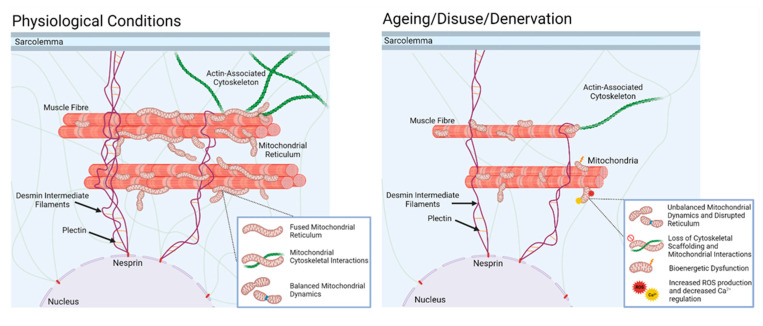Figure 4.
In normal physiology, skeletal muscle mitochondria are maintained in a complex reticulum by interactions with the actin cytoskeleton and intermediate filaments. This condition is associated with balanced mitochondrial dynamics, high capacity for energy production, low mitochondrial peroxide production, and minimal apoptotic signalling. With disuse of the muscle, or, as we speculate, denervation associated with ageing, the supportive interactions with the cytoskeleton are lost, leading to disruption of the reticulum, a change in mitochondrial dynamics (increased fission, reduced fusion, and increased mitophagy), and increased degenerative signalling through reduced energy production, increased mitochondrial peroxide, and increased apoptotic signalling.

